Forest Management and Climate Change Adaptation
- July 31, 2024
- 0 comment
Forest management and climate change adaptation are intertwined fields crucial for the sustainability of ecosystems and human societies. As climate change accelerates, forests face increased threats from extreme weather events, shifting precipitation patterns, and rising temperatures. Effective forest management practices are essential to mitigate these impacts and enhance the resilience of forest ecosystems. This involves integrating adaptive strategies such as selecting climate-resilient tree species, promoting biodiversity, and implementing sustainable harvesting techniques.

Additionally, protecting existing forests and restoring degraded ones can sequester carbon, thereby reducing atmospheric CO2 levels. Adaptive management also encompasses monitoring forest health, fostering community engagement, and developing policies that support sustainable practices. By proactively addressing the challenges posed by climate change, forest management can help ensure the long-term health and productivity of forest ecosystems, which are vital for biodiversity, carbon storage, and the livelihoods of countless communities worldwide.
Impacts of Climate Change on Forests
Climate change is profoundly affecting forests around the world, altering their structure, composition, and functionality. Rising temperatures, shifting precipitation patterns, and increased frequency of extreme weather events such as droughts, storms, and wildfires pose significant threats to forest ecosystems. These changes can lead to a decline in forest health, reduced biodiversity, and the disruption of ecosystem services such as carbon sequestration, water regulation, and habitat provision. For instance, prolonged droughts can weaken trees, making them more susceptible to pests and diseases, while increased temperatures can shift the geographical range of many tree species, leading to the loss of native species and the invasion of non-native ones.
Changes in Temperature and Precipitation Patterns
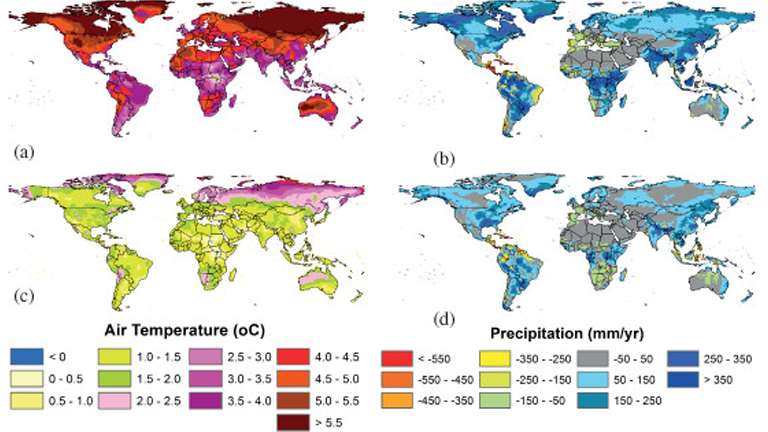
Climate change is profoundly altering the temperature and precipitation patterns across the globe, with significant consequences for forests. Rising temperatures can lead to longer growing seasons in some regions but also increase the risk of heat stress for many tree species. This thermal stress can reduce growth rates, weaken trees, and make them more susceptible to other environmental stressors. Moreover, changes in precipitation patterns, such as more intense and irregular rainfall, can disrupt the delicate balance of water availability that forests depend on. Some areas may experience prolonged droughts, leading to water shortages that stress trees and reduce their resilience. Conversely, increased rainfall in other regions can lead to soil erosion and nutrient leaching, further compromising forest health.
Increased Frequency and Severity of Extreme Weather Events
The escalation in frequency and intensity of extreme weather events due to climate change poses a severe threat to forest ecosystems. Events such as hurricanes, storms, and wildfires are becoming more common and destructive, causing widespread damage to forests. High winds can uproot trees and strip leaves, while heavy rains can lead to landslides and flooding, devastating forest landscapes. Wildfires, exacerbated by higher temperatures and prolonged dry periods, can destroy vast tracts of forest, releasing large amounts of carbon dioxide and other greenhouse gases into the atmosphere. These extreme events not only result in immediate loss of forest cover but also disrupt the ecological processes and habitat structures that support forest regeneration and biodiversity.
Shifts in Species Distribution and Forest Composition
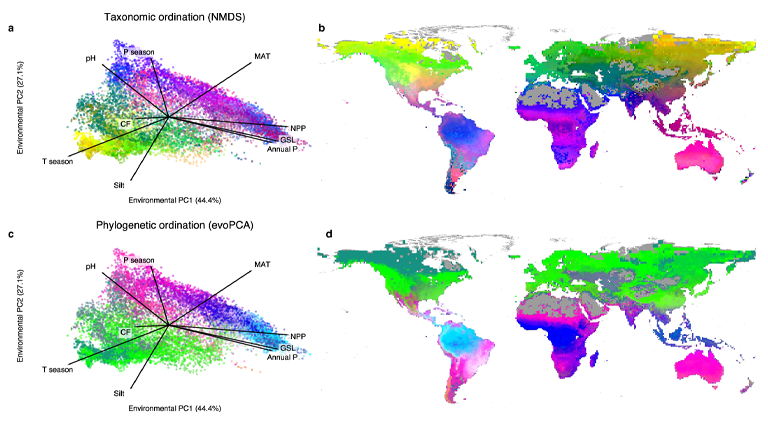
Climate change is driving shifts in species distribution and altering the composition of forests worldwide. As temperatures rise and precipitation patterns change, many tree species are migrating to higher altitudes or latitudes in search of suitable climatic conditions. This shift can lead to the decline of native species that are unable to adapt quickly enough, resulting in changes to forest composition and structure. For example, species that once thrived in a particular region may be replaced by more heat-tolerant or drought-resistant species. This alteration in species distribution can disrupt existing ecological relationships, such as those between trees and their pollinators or seed dispersers, potentially leading to declines in forest health and productivity.
Pests and Diseases Proliferation

The proliferation of pests and diseases is another significant impact of climate change on forests. Warmer temperatures and changing precipitation patterns create favorable conditions for the spread of many forest pests and pathogens. Insects such as bark beetles, which thrive in warmer climates, have caused extensive damage to forests in North America and Europe, killing millions of trees and increasing the risk of wildfires. Similarly, fungal pathogens that cause diseases like root rot and canker are becoming more widespread, weakening trees and making them more susceptible to other stressors.
The increased prevalence of pests and diseases can lead to significant economic losses in forestry and reduce the ecological services that healthy forests provide, such as carbon sequestration and habitat for wildlife.
Principles of Climate-Adapted Forest Management
Climate-adapted forest management involves a set of principles aimed at enhancing the resilience of forest ecosystems to climate change. These principles include maintaining and enhancing biodiversity, which provides forests with greater flexibility to adapt to changing conditions. Emphasizing the use of native and climate-resilient tree species can help ensure that forests remain robust against climate stressors. Sustainable forest management practices, such as selective logging and reduced impact logging, minimize damage to the forest and maintain its ecological functions.
Adaptive management is also crucial, involving continuous monitoring and flexible management practices that can be adjusted as conditions change. This proactive approach helps forest managers respond effectively to unforeseen challenges and opportunities.
Resilience and Flexibility in Management Practices
A cornerstone of climate-adapted forest management is fostering resilience and flexibility within management practices. Resilience refers to the ability of forests to withstand and recover from disturbances such as extreme weather events, pests, and diseases, all of which are exacerbated by climate change. Flexible management practices involve continuous monitoring and the capacity to adjust strategies as conditions change. This adaptive approach allows forest managers to respond dynamically to unforeseen challenges, such as sudden pest outbreaks or shifts in weather patterns. Techniques such as selective logging, promoting mixed-species stands, and maintaining structural diversity within forests enhance their resilience, ensuring that forests can continue to provide essential ecosystem services under changing climatic conditions.
Long-Term Planning and Scenario Analysis
Effective climate-adapted forest management requires long-term planning and scenario analysis. This involves looking beyond short-term economic gains and considering the long-term health and productivity of forest ecosystems. Scenario analysis helps managers anticipate and prepare for a range of possible future conditions, considering factors such as projected climate changes, potential impacts on forest health, and socio-economic trends.
By developing and regularly updating management plans based on these analyses, forest managers can implement proactive measures that reduce vulnerability and enhance resilience. Long-term planning also involves setting clear goals for conservation, sustainable use, and restoration efforts, ensuring that forests remain viable and productive for future generations.
Ecosystem-Based Adaptation Approaches
Ecosystem-based adaptation (EbA) approaches leverage the natural processes and biodiversity of forest ecosystems to enhance their resilience to climate change. This principle emphasizes maintaining and restoring healthy ecosystems as a cost-effective strategy to mitigate climate impacts. Key EbA practices include protecting and restoring native vegetation, enhancing landscape connectivity to facilitate species migration, and promoting natural regeneration processes.
By prioritizing ecosystem health, these approaches help maintain the ecological functions that support forest resilience, such as nutrient cycling, water regulation, and carbon sequestration. EbA also contributes to broader environmental goals, such as biodiversity conservation and climate mitigation, by maintaining intact and functional ecosystems.
Community Involvement and Traditional Knowledge Integration
Community involvement and the integration of traditional knowledge are vital principles of climate-adapted forest management. Local communities often possess a deep understanding of their forest ecosystems, gained through generations of observation and interaction. Incorporating this traditional knowledge into management practices can provide valuable insights into sustainable adaptation methods. Active community participation in decision-making processes ensures that management strategies are culturally appropriate, socially accepted, and effectively address local needs and challenges. Engaging communities also fosters stewardship and accountability, as people are more likely to support and adhere to management practices that they have helped develop.
Collaborative management approaches, such as community forestry and participatory planning, enhance the social resilience of forest-dependent communities while promoting sustainable forest management.
Climate Change Adaptation Strategies in Forest Management

Several strategies can be employed to adapt forest management to climate change. One key strategy is assisted migration, which involves relocating tree species to areas where they are more likely to thrive under future climate conditions. Another approach is the enhancement of structural diversity within forests, which can improve their resilience to disturbances. This can be achieved by promoting mixed-species stands and varied age structures. Restoration of degraded forests also plays a vital role in climate adaptation, as healthy forests are better able to withstand and recover from climate impacts. Additionally, incorporating traditional and local knowledge into forest management practices can provide valuable insights into sustainable adaptation methods.
A. Enhancing Forest Resilience
Diversification of Tree Species
Diversifying tree species within forests is a fundamental strategy for enhancing resilience to climate change. Mixed-species forests are more adaptable to changing environmental conditions, pests, and diseases than monocultures. By planting a variety of species, forest managers can ensure that some trees will thrive under new climatic conditions, thereby maintaining the overall health and productivity of the forest.
Promoting Genetic Diversity
Genetic diversity within tree species is crucial for their adaptability and resilience. Forest managers can promote genetic diversity by sourcing seeds from a wide range of locations and selecting for traits that enhance survival under climate stressors such as drought, heat, and pests. This genetic variability increases the likelihood that some individuals will possess characteristics that allow them to survive and reproduce under changing conditions.
Assisted Migration and Reforestation with Climate-Resilient Species
Assisted migration involves relocating tree species to areas where they are more likely to thrive under future climate conditions. This proactive strategy can help preserve species that might otherwise decline due to unsuitable climates. Reforestation efforts should focus on planting climate-resilient species that are better equipped to handle anticipated changes in temperature and precipitation patterns, ensuring long-term forest health and productivity.
B. Sustainable Forest Management Practices
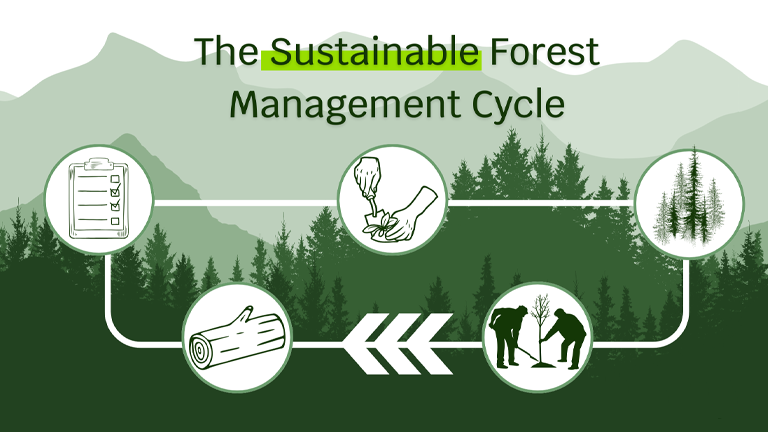
Selective Logging and Reduced-Impact Logging
Selective logging and reduced-impact logging techniques minimize ecological disruption and maintain forest structure and function. By carefully selecting which trees to harvest and using methods that reduce soil compaction and damage to surrounding vegetation, forest managers can support the sustainability and resilience of forest ecosystems.
Controlled Burns and Fire Management
Controlled burns and fire management practices are essential for reducing the risk of catastrophic wildfires, which are becoming more frequent and intense due to climate change. By conducting controlled burns, forest managers can reduce fuel loads, promote the regeneration of fire-adapted species, and create firebreaks that help protect forests and surrounding communities from uncontrolled wildfires.
Soil and Water Conservation Techniques
Conserving soil and water resources is critical for maintaining forest health under changing climatic conditions. Techniques such as mulching, contour planting, and the construction of swales and terraces help retain soil moisture, reduce erosion, and enhance water infiltration. These practices support tree growth and resilience, particularly in areas prone to drought and heavy rainfall.
C. Monitoring and Early Warning Systems
Remote Sensing and Geographic Information Systems (GIS)
Remote sensing and GIS technologies are powerful tools for monitoring forest health and detecting changes over time. These technologies enable forest managers to track deforestation, forest degradation, and changes in vegetation cover, providing valuable data for making informed management decisions and developing adaptive strategies.
Pest and Disease Monitoring
Monitoring for pests and diseases is crucial for early detection and rapid response to outbreaks that can devastate forests. By using traps, field surveys, and remote sensing technologies, forest managers can identify pest and disease infestations early, allowing for timely interventions that minimize damage and spread.
Climate and Weather Forecasting Tools
Climate and weather forecasting tools provide essential information for anticipating and preparing for extreme weather events, such as droughts, storms, and heatwaves. By integrating these tools into forest management practices, managers can develop proactive measures to protect forests, such as adjusting planting schedules, implementing water conservation practices, and preparing for fire season.
D. Restoration and Conservation Efforts
Reforestation and Afforestation Projects
Reforestation and afforestation projects are vital for restoring degraded forests and increasing forest cover. These efforts not only sequester carbon, mitigating climate change, but also enhance biodiversity, water regulation, and soil health. Planting native and climate-resilient species ensures that restored forests can withstand future climatic conditions.
Protection of Critical Habitats and Biodiversity Hotspots
Protecting critical habitats and biodiversity hotspots is essential for preserving the ecological integrity and resilience of forest ecosystems. By establishing protected areas, forest managers can safeguard the habitats of endangered species, maintain genetic diversity, and ensure the continued provision of ecosystem services.
Wetland and Riparian Zone Restoration
Restoring wetlands and riparian zones is crucial for enhancing water quality, reducing flood risks, and providing habitat for diverse species. These areas act as natural buffers, filtering pollutants and stabilizing shorelines, and their restoration contributes to the overall health and resilience of forest ecosystems.
E. Policy and Governance
Developing and Implementing Climate-Smart Forestry Policies
Effective policy frameworks are essential for supporting climate-adapted forest management. Climate-smart forestry policies should promote sustainable practices, incentivize conservation efforts, and integrate climate change considerations into all aspects of forest management. These policies provide the foundation for coordinated and effective adaptation strategies.
Incentives for Sustainable Practices and Ecosystem Services
Providing incentives for sustainable forest management practices and ecosystem services encourages landowners and managers to adopt and maintain these practices. Financial incentives, such as payments for ecosystem services (PES), tax breaks, and subsidies, can support reforestation, conservation, and sustainable harvesting efforts, fostering a culture of sustainability.
International Cooperation and Agreements
International cooperation and agreements play a crucial role in addressing the global challenges of climate change and forest management. By participating in international frameworks, such as the Paris Agreement and the United Nations REDD+ program, countries can share knowledge, resources, and best practices, enhancing their collective ability to adapt to climate change and protect forest ecosystems.
Challenges and Barriers in Climate-Adapted Forest Management
Adapting forest management practices to address the impacts of climate change is a complex and multifaceted endeavor. While there are numerous strategies and approaches available, several challenges and barriers can hinder their effective implementation. These include financial and resource constraints, lack of technical knowledge and capacity, policy and institutional barriers, and ensuring equitable adaptation benefits for local communities.
Financial and Resource Constraints
One of the primary challenges in implementing climate-adapted forest management is the availability of financial resources. Effective adaptation strategies often require significant investment in monitoring technologies, research, and infrastructure development. Many countries, particularly developing nations, struggle to allocate sufficient funds for these purposes due to competing priorities and limited budgets.
Moreover, securing long-term funding for forest management projects can be difficult. Short-term funding cycles do not align well with the long-term nature of forest adaptation needs. This lack of sustained financial support can lead to the discontinuation of vital projects, undermining their effectiveness and reducing the resilience of forest ecosystems.
Resource constraints extend beyond financial aspects to include human and technical resources. Many forest management agencies and organizations lack the personnel and expertise required to implement advanced climate adaptation strategies. This shortage of skilled professionals can impede the development and execution of effective adaptation plans.
Lack of Technical Knowledge and Capacity
A significant barrier to climate-adapted forest management is the lack of technical knowledge and capacity among forest managers and stakeholders. Understanding the complex interactions between climate change and forest ecosystems requires specialized knowledge in fields such as ecology, climatology, and remote sensing. Many regions, especially those with limited access to education and training, face challenges in building this expertise.
The rapid pace of technological advancements also poses a challenge. While new tools and technologies, such as Geographic Information Systems (GIS) and remote sensing, offer powerful capabilities for monitoring and managing forests, their effective use requires continuous training and capacity building. Forest managers need to stay updated with the latest techniques and methodologies to leverage these tools effectively.
Furthermore, the dissemination of scientific knowledge and best practices is often inadequate. Bridging the gap between research and practical application is crucial for ensuring that forest managers have access to the information they need to implement climate-adapted strategies.
Policy and Institutional Barriers
Policy and institutional barriers can significantly impede the implementation of climate-adapted forest management. In many cases, existing policies and regulations do not adequately address the complexities of climate change or provide the flexibility needed for adaptive management. Rigid policy frameworks can limit the ability of forest managers to respond to emerging challenges and opportunities.
Institutional fragmentation is another major obstacle. Effective climate-adapted forest management requires coordination and collaboration across multiple sectors, including forestry, agriculture, water management, and disaster risk reduction. However, institutional silos and lack of coordination can lead to fragmented efforts and inefficiencies. Establishing integrated and coherent policy frameworks is essential for overcoming these barriers.
Moreover, the lack of political will and support can hinder progress. Climate-adapted forest management often competes with other pressing issues for political attention and resources. Advocacy and awareness-raising efforts are needed to highlight the importance of forest adaptation and secure the necessary political and institutional backing.
Ensuring Equitable Adaptation Benefits for Local Communities
Ensuring that the benefits of climate-adapted forest management are equitably distributed among local communities is a critical challenge. Many forest-dependent communities are vulnerable to the impacts of climate change and rely on forest resources for their livelihoods. However, adaptation strategies can sometimes exacerbate existing inequalities if not carefully designed and implemented.
Community involvement and participation in decision-making processes are essential for ensuring that adaptation efforts address local needs and priorities. However, marginalized groups, such as indigenous peoples and women, often face barriers to participation. Overcoming these barriers requires deliberate efforts to engage and empower these communities, recognizing their rights and knowledge.
Frequently Asked Question (FAQs)
1. What is forest management?
Forest management refers to the process of planning and implementing practices for the stewardship and use of forests to meet specific environmental, economic, social, and cultural objectives. This includes maintaining and enhancing forest health, biodiversity, and productivity while ensuring sustainable use of forest resources.
2. How does climate change affect forests?
Climate change affects forests by altering temperature and precipitation patterns, increasing the frequency and intensity of extreme weather events, and exacerbating pest and disease outbreaks. These changes can lead to reduced forest health, biodiversity loss, shifts in species composition, and disruptions in ecosystem services such as carbon sequestration and water regulation.
3. What is climate-adapted forest management?
Climate-adapted forest management involves applying strategies and practices designed to increase the resilience of forests to the impacts of climate change. This includes selecting climate-resilient tree species, promoting biodiversity, implementing sustainable harvesting techniques, and using adaptive management approaches to respond to changing conditions.
4. What are some strategies for adapting forest management to climate change?
Key strategies for adapting forest management to climate change include assisted migration (relocating species to more suitable areas), enhancing structural diversity (promoting mixed-species stands and varied age structures), restoring degraded forests, and incorporating traditional and local knowledge into management practices. Continuous monitoring and flexible, adaptive management are also crucial.
5. Can you give examples of successful climate-adapted forest management?
Examples of successful climate-adapted forest management include the Assisted Tree Range Expansion (ATRE) project in Canada, which plants tree species in new, climate-appropriate regions; community-based forest management in Costa Rica that integrates traditional knowledge and scientific research; and adaptive management plans by the United States Forest Service that focus on maintaining biodiversity and forest health.
6. What are the main challenges in implementing climate-adapted forest management?
Challenges in implementing climate-adapted forest management include limited funding and resources, lack of political will and policy support, scientific uncertainties about future climate impacts, socio-economic factors such as land tenure issues and competing land-use interests, and the need for coordinated efforts among various stakeholders.
7. Why is biodiversity important in climate-adapted forest management?
Biodiversity is important in climate-adapted forest management because it provides greater flexibility and resilience to changing conditions. Diverse ecosystems are better able to adapt to and recover from disturbances, maintain ecological functions, and support a wider range of species and ecosystem services.
8. How does forest restoration contribute to climate change adaptation?
Forest restoration contributes to climate change adaptation by improving the health and resilience of forest ecosystems. Healthy forests are better able to withstand and recover from climate impacts, sequester more carbon, support biodiversity, and provide essential ecosystem services such as water regulation and habitat provision.
9. What role do local communities play in climate-adapted forest management?
Local communities play a crucial role in climate-adapted forest management by contributing traditional and local knowledge, participating in decision-making processes, and implementing sustainable practices. Community engagement ensures that management strategies are culturally appropriate, socially accepted, and effective in addressing local needs and challenges.
10. How can policymakers support climate-adapted forest management?
Policymakers can support climate-adapted forest management by providing funding and resources, developing and enforcing supportive policies and regulations, promoting research and knowledge sharing, and facilitating collaboration among various stakeholders. Policy support is essential for creating an enabling environment for sustainable forest management practices.

Gilbert Griffin
Forestry AuthorGilbert Griffin is a forest management expert specializing in sustainable practices, forest health, conservation, and land management. With extensive knowledge in pest control, disease management, and habitat restoration, Gilbert develops strategies to preserve forest ecosystems and biodiversity. Passionate about the natural world, Gilbert adapts to changes in forest management and stays updated through continuous learning. Gilbert also provides seasonal advice to optimize forest care throughout the year.



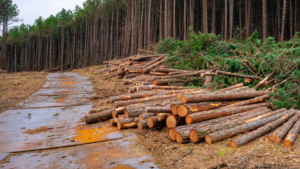
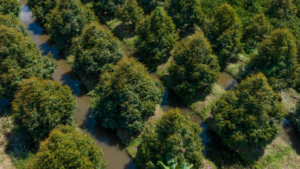

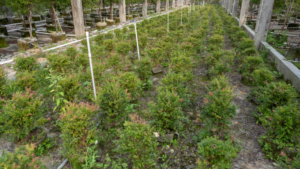

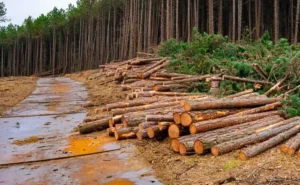



Leave your comment